There are a number of service styles to be followed when it comes to how food and beverage should be served to the customers. The following are the most prominent styles −
Table Service
In this type of service, the guests enter the dining area and take seats. The waiter offers them water and menu card. The guests then place their order to the waiter. The table is covered in this service. It is grouped into the following types.
English or Family Service
Here, the host contributes actively in the service. The waiter brings food on platters, shows to the host for approval, and then places the platters on the tables. The host either makes food portions and serves the guests or allows the waiter to serve. To replenish the guests’ plates, the waiter takes the platters around to serve or to let the guests help themselves. This is a common family service in specialty restaurants where customers spend more time on premise.
American or Plate Service
The food is served on guest's plate in the kitchen itself in predetermined portion. The accompaniments served with the food, the color, and the presentation are determined in the kitchen. The food plates are then brought to the guest. This service is commonly used in a coffee shop where service is required to be fast.
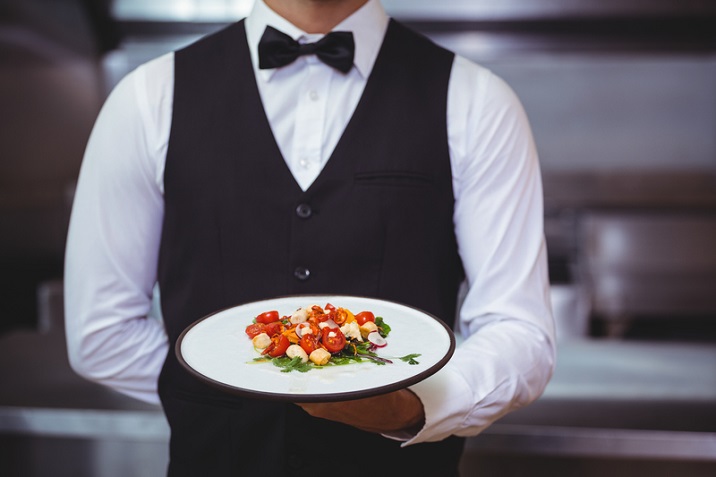
French Service
It is very personalized and private service. The food is taken in platters and casseroles and kept on the table of guests near their plates. The guests then help themselves. It is expensive and elaborate service commonly used in fine dining restaurants. This service has two variants −
- Cart French Service − The food is prepared and assembled at tableside. The guests select food from the cart while sitting at their tables and are later served from the right. It is offered for small groups of VIPs.
- Banquet French Service − The food is prepared in the kitchen. The servers serve food on each individual’s plate from guest’s left side. For replenishment, the servers keep the food platters in front of the guests.
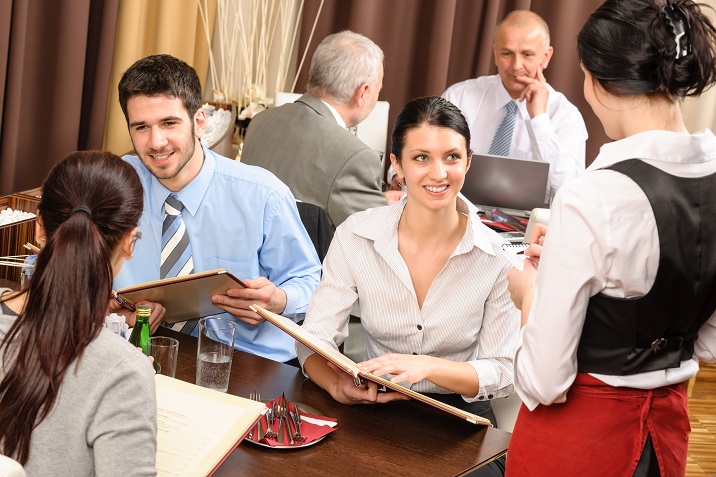
Gueridon Service
In this service, partially cooked food from the kitchen is taken to the Gueridon Trolly for cooking it completely. This partial cooking is done beside the guest table for achieving a particular appearance and aroma of food, and for exhibiting showmanship. It also offers a complete view of food. The waiter needs to perform the role of cook partially and needs to be dexterous.
Silver Service
In this service, the food is presented on silver platters and casseroles. The table is set with sterling silverware. The food is portioned into silver platters in the kitchen itself. The platters are placed on the sideboard with burners or hot plates. At the time of serving, the waiter picks the platter from hot plate and presents it to the host for approval and serves each guest using a service spoon and fork.
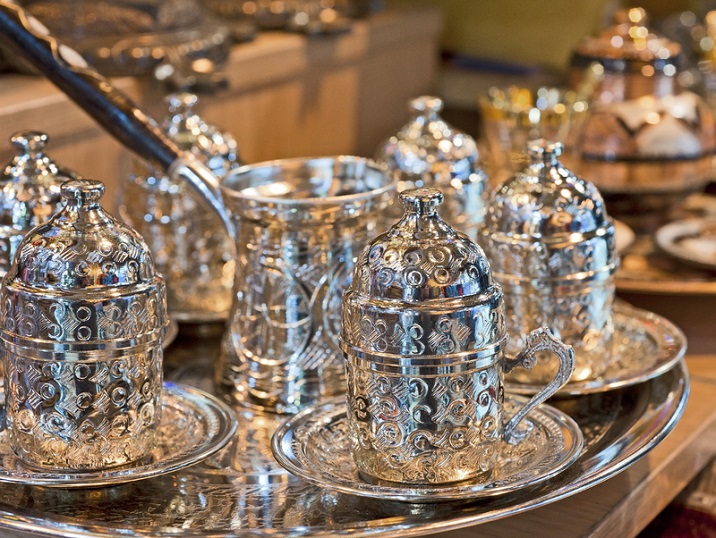
Russian Service
It is identical to the Cart French service barring the servers place the food on the platters and serve it from the left side.
Assisted Service
Here, the guests enter the dining area, collect their plates, and go to buffet counters and help themselves. The guests may partially get service at the table or replenish their own plates themselves.
Buffet Service
It this type of service, the guests get plates from the stack and goes to buffet counter where food is kept in large casseroles and platters with burners. The guests can serve themselves or can request the server behind the buffet table to serve. In sit-down buffet restaurants, the tables are arranged with crockery and cutlery where guests can sit and eat, and then replenish their plates.
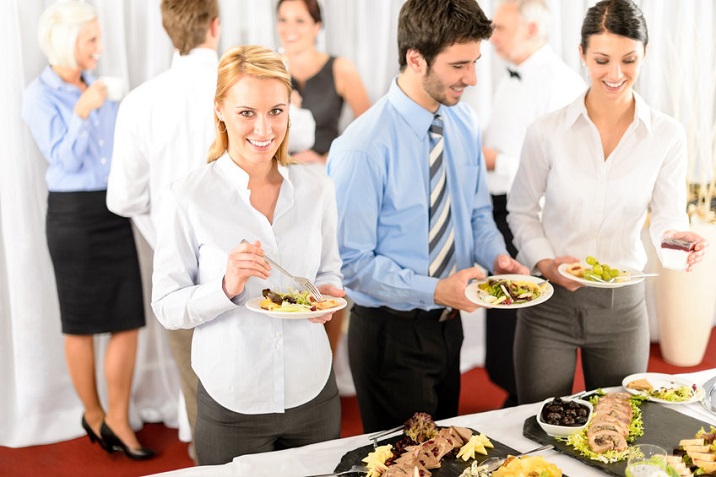
Self Service
In this type of service, the guests enter the dining area and select food items. They pay for coupons of respective food items. They go to food counter and give the coupons to avail the chosen food. The guests are required to take their own plates to the table and eat.
Cafeteria Service
This service exists in industrial canteens, hostels, and cafeterias. The menu and the space is limited; the cutlery is handed over to the guests. The tables are not covered. Sometimes high chairs are provided to eat food at narrow tables. It is a quick service.
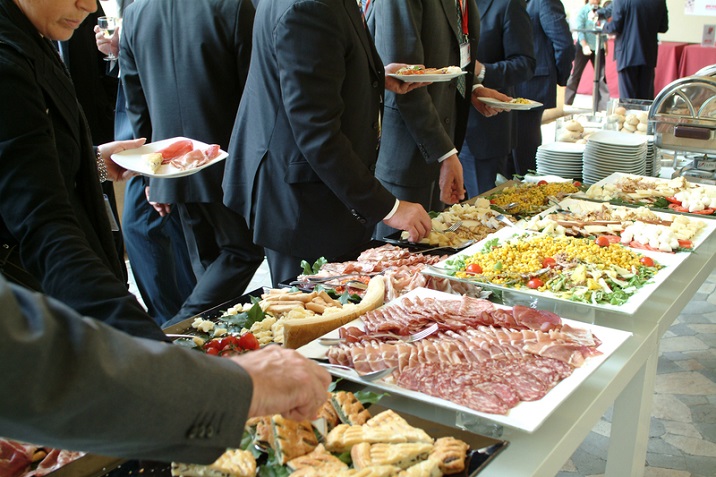
Single Point Service
In this type of service, the guest orders, pays for his order and gets served all at a single point. There may be may not be any dining area or seats. The following are the different methods of Single Point Service.
Food Court
This is an array of autonomous counters at which the customers can order, eat, or buy from a number of different counters and eat in adjacent eating area.
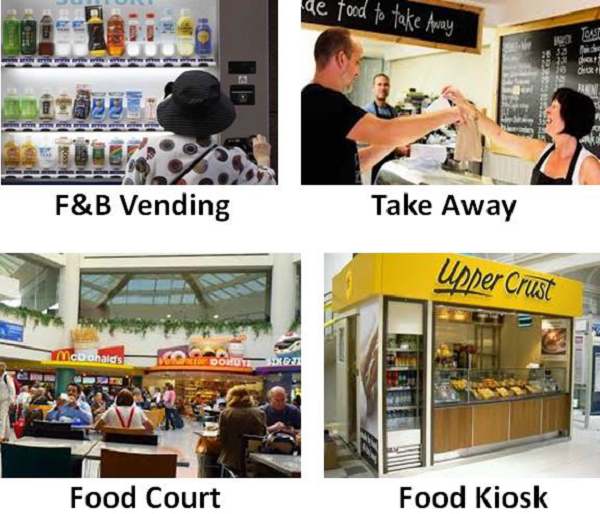
Kiosks
The customer enters the choice and amount of money physically and the machine dispenses what customer demanded accurately.
Take Away
Customer orders and avails food and beverage from a single counter and consumes it off the premises.
Vending
The customer can get food or beverage service by means of automatic machines. The vending machines are installed in industrial canteens, shopping centers, and airports.
Special Service
It is called special service because it provides food and beverage at the places which are not meant for food & beverage service. The following are the different methods of special service.
Grill Room Service
In this type of service, various vegetables and meats are displayed for better view and choice. The counter is decorated with great aesthetics, and the guest can select meat or vegetable of choice. The guest then takes a seat and is served cooked food with accompaniments.
Tray Service
Method of service of whole or part of meal on tray to customer in situ, such as hospitals, aircraft, or railway catering.
Trolley/Gueridon Service
Food is cooked, finished or presented to the guest at a table, from a moveable trolley. For example, food served on trollies for office workers or in aircrafts and trains.
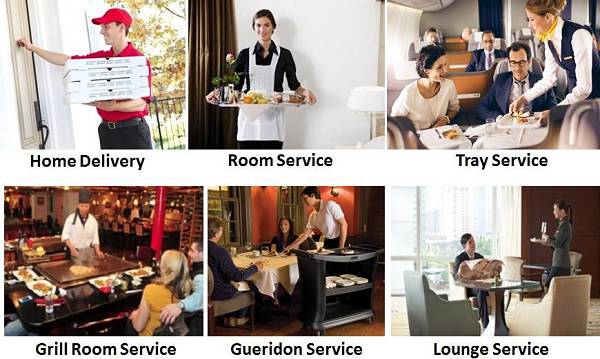
Home Delivery
Food delivered to a customer’s home or place of work. For example, home delivery of pizza or Meals on Wheels.
Lounge Service
Service of variety of foods and beverages in lounge area of a hotel or independent place.
Room Service
Here food is served to guests in their allotted rooms in hotels. Small orders are served in trays. Major meals are taken to the room on trolleys. The guest places his order with the room service order taker.
The waiter receives the order and transmits the same to the kitchen. Meanwhile, he prepares his tray or trolley. He then goes to the cashier to prepare and take the bill. He then takes the bill along with the food order for the guests’ signature or payment. Usually clearance of soiled dishes from the room is done after half an hour or an hour. However, the guest can telephone Room Service for the clearance as and when he has finished with the meal.

Comments
Post a Comment